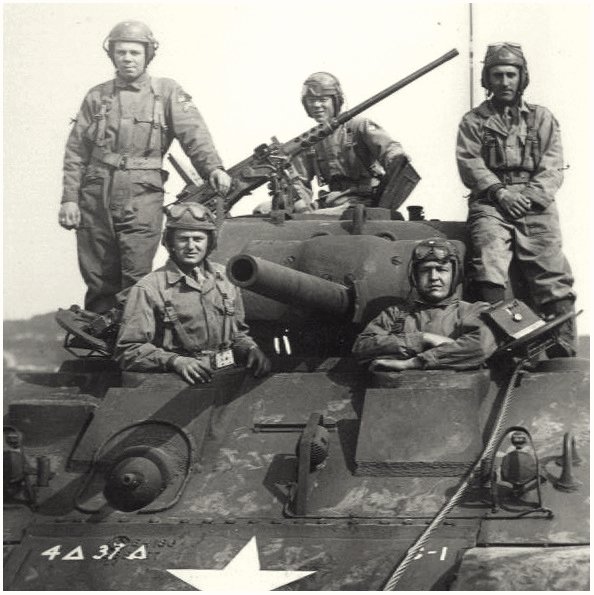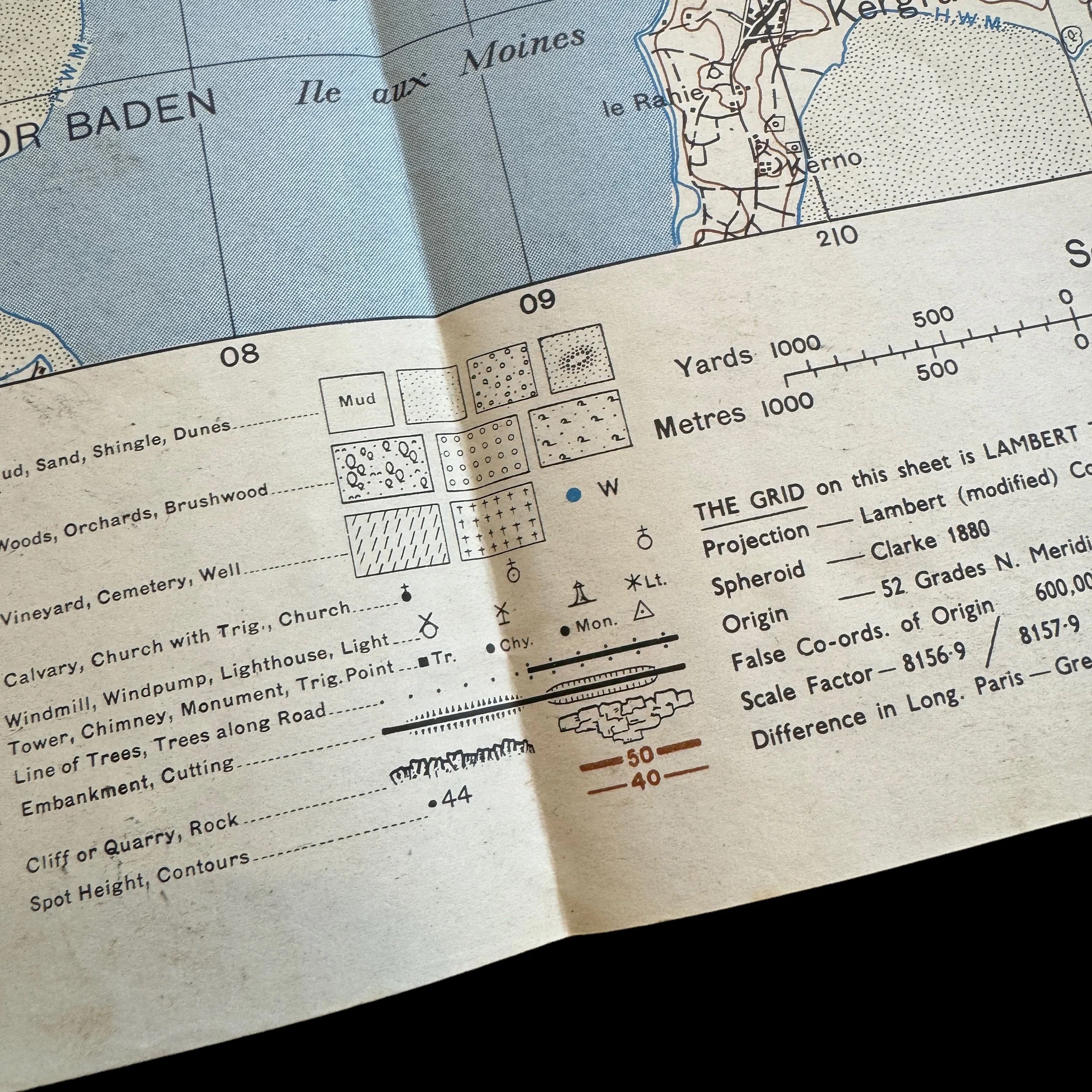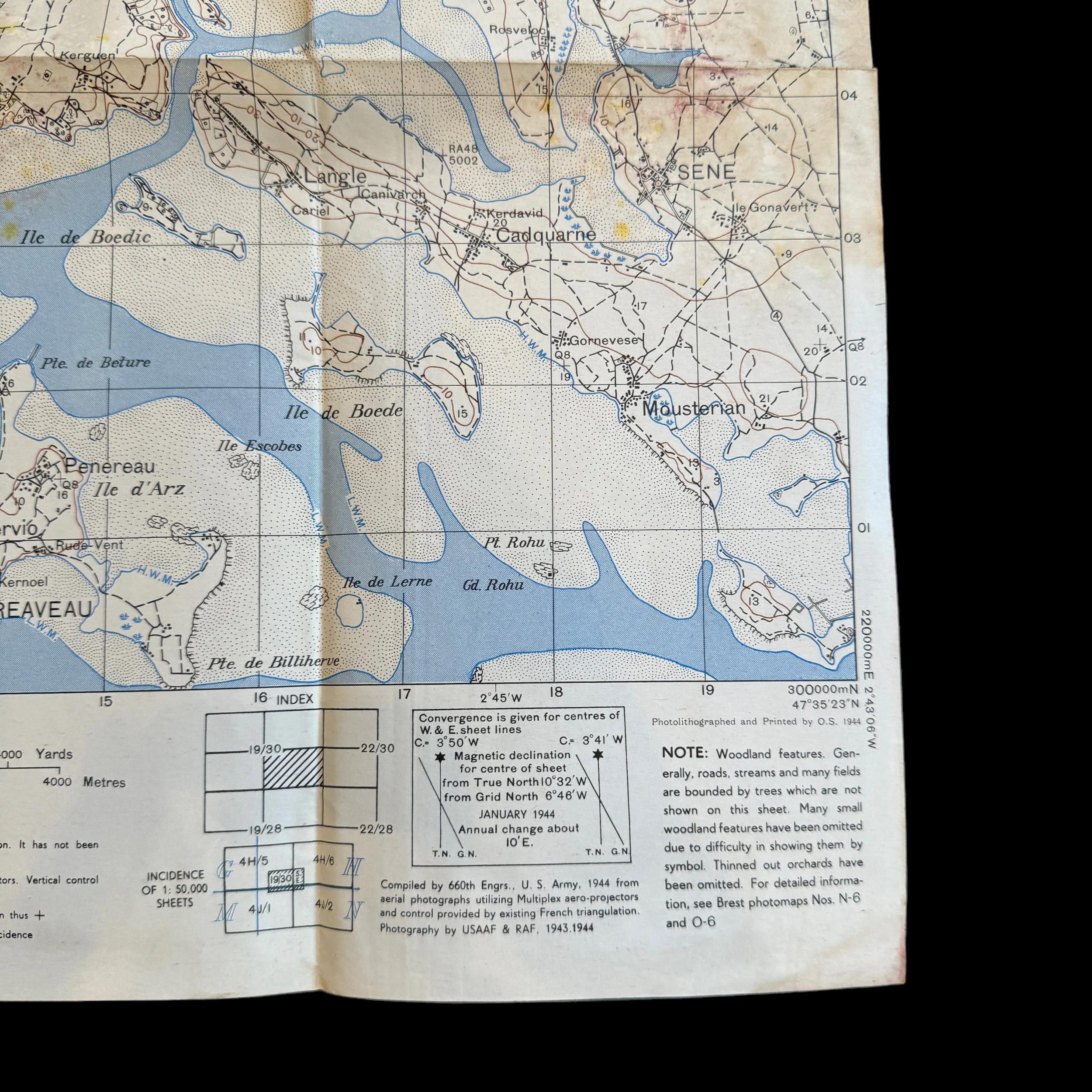RARE! WWII U.S. Infantry & Armored Battle for Brittany June 1944 EDITION Liberation of Vannes Combat Map



































RARE! WWII U.S. Infantry & Armored Battle for Brittany June 1944 EDITION Liberation of Vannes Combat Map
Comes with a hand-signed C.O.A.
“On August 2, Maj. Gen, John Wood’s division arrived at Rennes and found it heavily defended by the Germans. Patton ordered Rennes bypassed, and ordered an advance on Lorient. The Germans set fire to the supply dumps in Rennes the next day and withdrew. Fifteen German tanks counterattacked on August 4, but that did not stop Wood’s lightning advance. The American fighters dealt with the German armor. Wood’s division captured Vannes on the Bay of Biscay on August 5, thereby cutting off the last escape route for the remaining German forces in Brittany.”
This very rare and museum-grade WWII Operation Cobra U.S. Infantry & Armored Division combat map was used during the infamous Battle for Brittany which took place between August and October 1944. After the Allies broke out of Normandy in June 1944, Brittany became targeted for its well-developed ports which the Allies intended to use, whilst also stopping their continued use by German U-boats. Titled “Vannes” this is an extremely rare FIRST (PROFF) EDITION (June 1944) printing. This combat map was the same map type distributed to U.S. soldiers for the initial D-Day invasion on June 6th, 1944.
The Battle of Brittany, a significant but often overshadowed chapter of the Second World War, played a crucial role in the Allied liberation of Western Europe following the D-Day landings. The campaign, lasting from August to October 1944, was characterized by intense and grueling combat as Allied forces aimed to capture key port facilities and deny the German army essential logistical support. The mission to capture Vannes, a strategic town in the region, exemplifies the broader strategic objectives and challenges faced by the Allies in Brittany.
Strategic Importance of Brittany
Brittany's geographical positioning on the French Atlantic coast made it immensely strategic during World War II. The peninsula housed several major ports, including Brest, Lorient, and Saint-Nazaire, which were vital for the German Navy and had been heavily fortified as part of the Atlantic Wall. Capturing these ports was essential for the Allies to cut off German supply lines and to use these harbors for their logistical operations. The region's liberation was also crucial to alleviate the pressure on Normandy's ports, which were overburdened with supplying the advancing Allied forces.
Planning and Initial Advances
Following the successful Normandy landings on June 6, 1944, the Allied forces, under the command of General Dwight D. Eisenhower, with ground operations led by General Omar Bradley, quickly realized the necessity of a swift offensive into Brittany. Operation Cobra, initiated in late July, allowed the U.S. Third Army, commanded by General George S. Patton, to break out of the Normandy beachhead. Patton's forces swept through Avranches, opening the gateway to Brittany.
The Mission to Capture Vannes
Vannes, a town of significant historical and strategic value, was a critical target in the campaign. Located inland from the southern coast of Brittany, the capture of Vannes was crucial for several reasons:
Control over Road Networks: Vannes sat at a nexus of several major roads leading to other key locations, including Lorient and Saint-Nazaire. Control over Vannes would facilitate further Allied advances and disrupt German movements and supply lines.
Local Support and Resistance Assistance: The area around Vannes had an active French Resistance network, which could provide invaluable support to the Allies in terms of intelligence and manpower.
The approach to Vannes was fraught with challenges. The German forces, aware of the town's strategic importance, had strengthened their positions, utilizing both the natural defensive features of the region and constructed fortifications. The terrain around Vannes, characterized by thick hedgerows and small fields, was ideally suited to defensive warfare, a factor the Germans exploited to their advantage.
The Battle for Vannes
The battle began in early August 1944, when American units started their approach toward the town. The 4th Armored Division, spearheading the attack, encountered stiff resistance from elements of the German 2nd Parachute Division. The Germans, well-entrenched and experienced, leveraged the bocage countryside—typical of Brittany—to mount a formidable defense.
American tactics had to adapt to these conditions. Utilizing combined arms operations, U.S. forces employed artillery, armor, and infantry to slowly but systematically clear the German defenses. Air support from the U.S. Ninth Air Force played a pivotal role in dislodging the Germans from their positions, targeting supply lines and reinforcements.
The intensity of the fighting was reflected in the slow pace of advance. Each hedgerow, farm, and village turned into a mini-battlefield. The American forces, learning from earlier experiences in Normandy, improved their coordination and tactics, involving more precise artillery barrages followed by swift infantry assaults.
Capture and Aftermath
Vannes was finally liberated on August 7, 1944, after several days of intense fighting. The town's capture provided the Allies with a strategic base of operations to continue their push towards the larger ports of Lorient and Saint-Nazaire, though these would ultimately remain in German hands until the end of the war due to their formidable defenses.
The Battle of Brittany, with the mission to capture Vannes as a pivotal element, illustrates the complexity and ferocity of the Allied campaign in Western France. While not achieving all its objectives—most notably the failure to capture the major ports which remained under siege—the campaign significantly contributed to the overall weakening of German capabilities in Western Europe and helped pave the way for further Allied advances into occupied territories. The capture of Vannes not only exemplifies the tactical challenges faced by the Allies but also highlights the strategic importance of cooperation, adaptation, and local support in wartime operations.